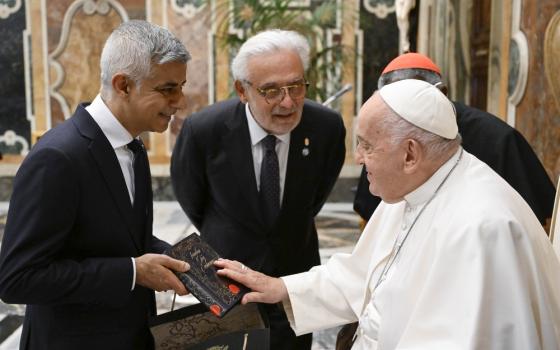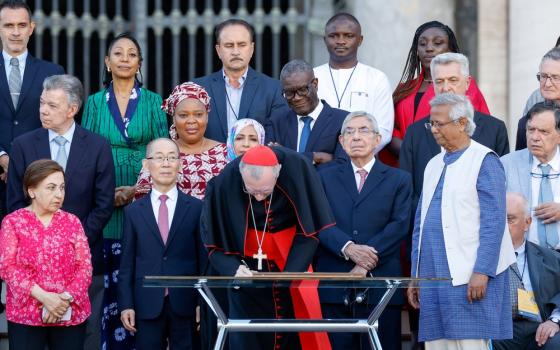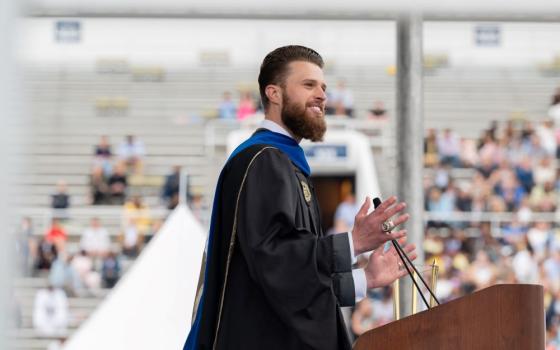
ANALYSIS
Even by the fractious standards of conversation about almost anything these days, debate over the Catholic sexual abuse crisis is remarkably polarized. Defenders say the church has cleaned up its act to such an extent that it’s now a model for child protection, while critics rip purported reforms as sound and fury signifying little.
In part, that’s because a fatal ambiguity has long shot through the discussion. Depending on who’s speaking, reference to “the crisis” can mean at least three different things:
- The abuse itself;
- A culture of silence and cover-up about that abuse;
- A perceived lack of accountability at the senior leadership level (i.e., the bishops and the Vatican), rooted, as critics see it, in flawed teachings about sexuality and power.
If those are the popular working definitions of what the crisis is about, one slightly irreverent way of capturing the institutional response so far would be in terms of a “Meat Loaf” strategy, invoking the title of a famous ballad by the ’70s rock star: “Two Out of Three Ain’t Bad.”
That is to say, officialdom has committed itself to reversing points one and two above, embracing what Vatican spokesperson Fr. Federico Lombardi recently described as a “culture of listening to victims, of prevention and reconciliation, which must be a permanent and fully integrated part of the life of the church.”
Leaders largely draw the line, however, on point three. Episcopal authority, priestly discipline and Catholic sexual morality didn’t cause the crisis, they insist -- a failure to apply them did.
That strategy will be on display anew in February 2012, when the Jesuit-sponsored Pontifical Gregorian University in Rome, in collaboration with several Vatican departments, hosts a first-ever international summit for roughly 200 bishops and superiors of religious orders from around the world. Organizers tout the event as the latest expression of the church’s concern to combat abuse, intended to promote a unified global approach.
In effect, the summit aims to be a showcase for the best of the institutional response.
The impetus comes from a circular letter to the bishops of the world released in May by the Vatican’s Congregation for the Doctrine of the Faith, setting out broad principles on support for victims, creating a safe environment, and cooperation with police and civil prosecutors. The congregation directed bishops’ conferences that don’t yet have formal policies on sexual abuse to develop them by May 2012, using the guidelines as a foundation.
The February conference, titled “Towards Healing and Renewal,” is designed to help bishops and religious orders craft sex abuse policies in line with the Vatican’s broad directives, the idea being to foster global coordination while still taking account of the diversity in local situations.
Prominent speakers are set to include Baroness Sheila Hollins of England, a psychiatrist and expert on abuse, who will focus on “giving a powerful voice to victims”; Msgr. Stephen Rossetti, former president of the St. Luke Institute in Silver Spring, Md., on learning from past mistakes in treating offenders; and Msgr. Charles Scicluna of the Congregation for the Doctrine of the Faith, the Vatican prosecutor who represents the “tip of the spear” of imposing swift and sure ecclesial justice.
All three speakers represent points of view that just a decade ago would have been considered somewhat “out there” by Vatican standards, yet today are firmly part of the mainstream.
Hollins will be joined by a sex abuse victim for her presentation at the symposium. She has recommended that all participants hold listening sessions with victims in their own dioceses before attending.
The symposium will also feature a selection of “best practices” in child protection from around the Catholic world, such as the VIRTUS program in the United States. Its centerpiece is “Protecting God’s Children,” a training program for both children and adults presently in use in more than 100 dioceses across America.
Organizers say the 2012 gathering will not be a mere photo-op or one-off event. One concrete outcome already in the works is a new “E-Center,” formally called the “Pastoral E-Center for Healing and Renewal.” The idea is to build a multilingual Web site providing information and resources for church leaders. The project will involve the Center for Child and Adolescent Psychiatry and Psychotherapy of the University of Ulm in Germany, as well as the Gregorian and medical schools at other universities around the world.
According to Msgr. Klaus Peter Franzl of the Munich, Germany, archdiocese, in its first three years the E-center will offer materials in German, English, Spanish, French and Italian, but that’s “only a beginning.”
The official Web site for the 2012 conference can be found at thr.unigre.it/vescovi2012.
German Jesuit Fr. Hans Zollner, who heads the Institute for Psychology at the Gregorian, leads a preparatory committee. In 2010, Zollner and another Jesuit, Italian Fr. Giovanni Cucci, published a book on the crisis titled The Church and Pedophilia: An Open Wound. In it, they argued that a media-induced “moral panic” over pedophilia, presenting old cases as new and distorting the statistical dimensions of the problem, “doesn’t help anybody.”
The desire of organizers to reach public opinion in the English-speaking world is reflected in the fact that they tapped Alexander Desforges, who handles media relations for the Bishops’ Conference of England and Wales, as their press consultant.
Those inclined to view institutional claims through a hermeneutic of suspicion, however, will likely remain unimpressed by all that.
There’s no indication the Gregorian symposium will take up any of the topics at the heart of the critics’ agenda, such as priestly celibacy or a perceived negative view of sex in Catholic moral teaching. Equally, there’s no reason to believe the event will lead to calls for new resignations by bishops, or revisions to the distribution of power in the church.
When the Congregation for the Doctrine of the Faith issued its new guidelines in May, the Survivors Network of those Abused by Priests derided them as toothless in the absence of a crackdown on bishops: “While [Pope] Benedict [XVI] has taken harsh moves against theologians whose words break church teaching, he won’t take any moves against bishops whose actions have broken children’s lives, spirits, health and faith,” a statement said at the time.
Such reactions often frustrate church officials, who perceive themselves to have made historic strides over a remarkably short arc of time.
When Benedict met with a group of church professionals in the area of child protection in the United Kingdom last September, he said: “Credit should be given where it is due. ... The efforts of the church in this country and elsewhere, especially in the last 10 years, to guarantee the safety of children and young people and to show them every respect as they grow to maturity, should be acknowledged.”
In that spirit, the 2012 summit would seem to loom as a test of whether the “Meat Loaf” strategy, even at its very best, can bring such an acknowledgment.
| LESSONS LEARNED FROM VIRTUS
Michael Bemi is president and CEO of the National Catholic Risk Retention Group, a Vermont-based insurer serving Catholic dioceses and religious communities in the United States. In the late 1990s, it pioneered the VIRTUS program, the centerpiece of which is “Protecting God’s Children,” training children and adults on abuse prevention and detection. It’s been used in 119 of the 196 dioceses in America. Workshops on VIRTUS will be presented during the February 2012 symposium in Rome, in effect offering it as a global model. Bemi and Patricia Neal, director of VIRTUS, recently spoke with NCR. The following are excerpts from Bemi’s comments. NCR: What lessons have you learned from VIRTUS? Take a situation like the diocese of Kansas City/St. Joseph. [Bishop Robert Finn has apologized for his handling of complaints against Fr. Shawn Ratigan, now charged criminally with possession of child pornography.] It was VIRTUS-trained people who initially brought the case to the attention of the principal of the school where Ratigan worked, who then reported it to the bishop. People needn’t be afraid of the enormity of the issue. Those just starting may have a natural reticence about whether such a program is too complicated, too cumbersome or too expensive. The answer in each case is “no.” Critics charge that “Protecting God’s Children” sexualizes young people prematurely. When training adults, we recommend that no one under 18 should be in the room. I’m not sure how you “sexualize” a 40-year-old adult. Critics also say that until there’s accountability for bishops, programs such as yours amount to window-dressing. It’s my job to sign the big checks for sex abuse claims, and today we see far fewer. Of course, some believe we will eventually see more because it sometimes takes 30 years for victims to come forward. Based on my experience in insurance and risk management, however, I don’t believe that’s true now. Since the first cases in the 1980s, every major publication and broadcast outlet has covered this story. The point has been made that the victims didn’t cause this and they deserve help. We also know that the plaintiffs’ bar is very active in searching for people to make claims. I don’t believe there are substantial numbers of new victims out there in a corner not yet able to talk about it. I would contend that where a bishop takes on the role of commander-in-chief and cheerleader for creating a safe environment, the program will work a lot better. But even where that’s not the case, the program will work anyway, because people in the pews get behind it. They take the attitude, “There’s a mandate out there and we’re going to do this.” -- John L. Allen Jr. |







